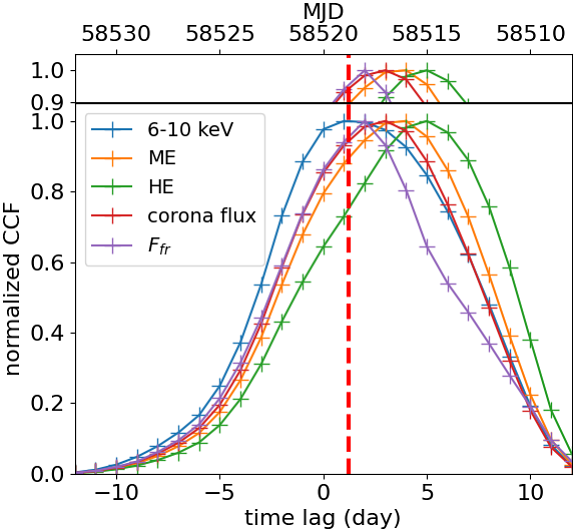The hot accretion flow evolution in the black hole X-ray binary MAXI J1348-630

The hot accretion flow evolution in the black hole X-ray binary MAXI J1348-630
Hanji Wu, Wei Wang
AbstractMAXI J1348-630 as a low-mass black hole binary system in the Galaxy showed an X-ray outburst in 2019. We analyzed the Insight-HXMT spectral data in the low hard state (LHS) and intermediate state (IS) during the outburst from MJD 58510 to 58519 at the energy band from 2 keV to 100 keV. During the entire process, a thin disk extending to the innermost stable circular orbit (ISCO) from a large truncated disk (truncated radius $> 5$ ISCO) suggests the corona geometry evolution. There exist time lags between radio and hard X-ray flux peaks: the 30 - 100 keV flux about 5 days ahead of radio flux, 11-30 keV flux about 4 days ahead, and reflection fraction about 2 days ahead, the accretion disk approaching the ISCO about 1 day before radio peak. This disk-corona-jet coupling and evolution suggest the corona containing two phases of cold dense material and hot gas, with high temperature region of corona cooling fast. The strong radio emission accompanying with a thin accretion disk of a relatively high accretion rate favors magnetic tower jet mechanism.